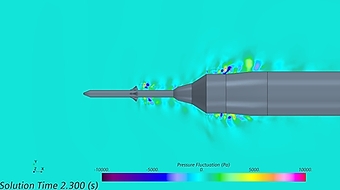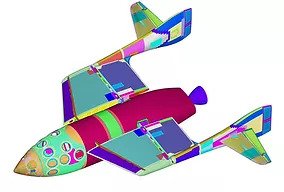Launch Vehicles.
Quartus was founded in 1997, and the first project ever undertaken was dynamic analysis of the Space Shuttle solid rocket motors. That expertise has been a constant factor through the years, continuing to this day with project experience on ARES, the SLS, and others. The variety of analysis ranges from CFD; vibro-acoustics; dynamic structural analysis, and has been performed on multiple components including flight instrumentation; solid rocket motors; crew compartments; and propulsion systems. Whether analysis is needed at launch, descent, or any stage in between, Quartus engineers have the expertise to get the job done right.
CAPABILITIES
Computational Fluid Dynamics
- External aerodynamics: aero database generation & trajectory model inputs
- Slosh dynamic effects: baffle design for re-entry maneuvers, microgravity effects, and propellant management device (PMD) design
- Plume modeling and impingement effects on ascent, descent, and landing
- Unsteady detached eddy simulation (DES) for aeroacoustics environments
Vibro-acoustics and Aeroacoustics
- Finite and boundary element models (FEM, BEM) and statistical energy analysis (SEA) using Wave6
- Aeroacoustics and unsteady aerodynamics – fluctuating pressure loads for transonic, max Q, and supersonic conditions
- Vibration environments, liftoff acoustic loads, and re-entry loads development
- Wind tunnel test support, data post-processing, and scaling
- Direct field acoustic test support
Structural Analysis and Dynamics
- Linear & nonlinear (contact & hyperelastic materials) static analysis for launch and transportation loads
- Pre-test analysis and model correlation adequate performance of flight instrumentation
- Coupled Loads Analysis (CLA) for environments and flight instrumentation simulations


CASE STUDY
Space Ship One and Space Ship Two
Quartus has been supporting iterations of this prize winning architecture since the early 2000s, starting with SpaceShipOne and White Knight One. Quartus supported this development with high level Finite Element Analysis (FEA) to perform flutter analysis, among other things. This support continued with SpaceShipTwo and White Knight Two, where Quartus performed pre-test flutter analysis, test planning, ground vibration test (GVT) support, and post-GVT finite element model (FEM) correlation. We are incredibly excited to see this work receive approval from the FAA for human flight.
